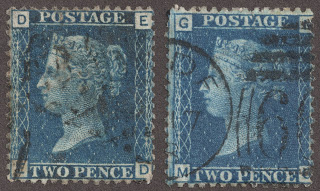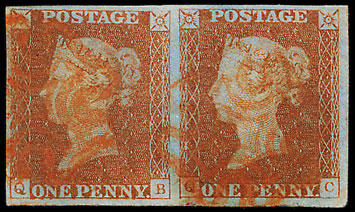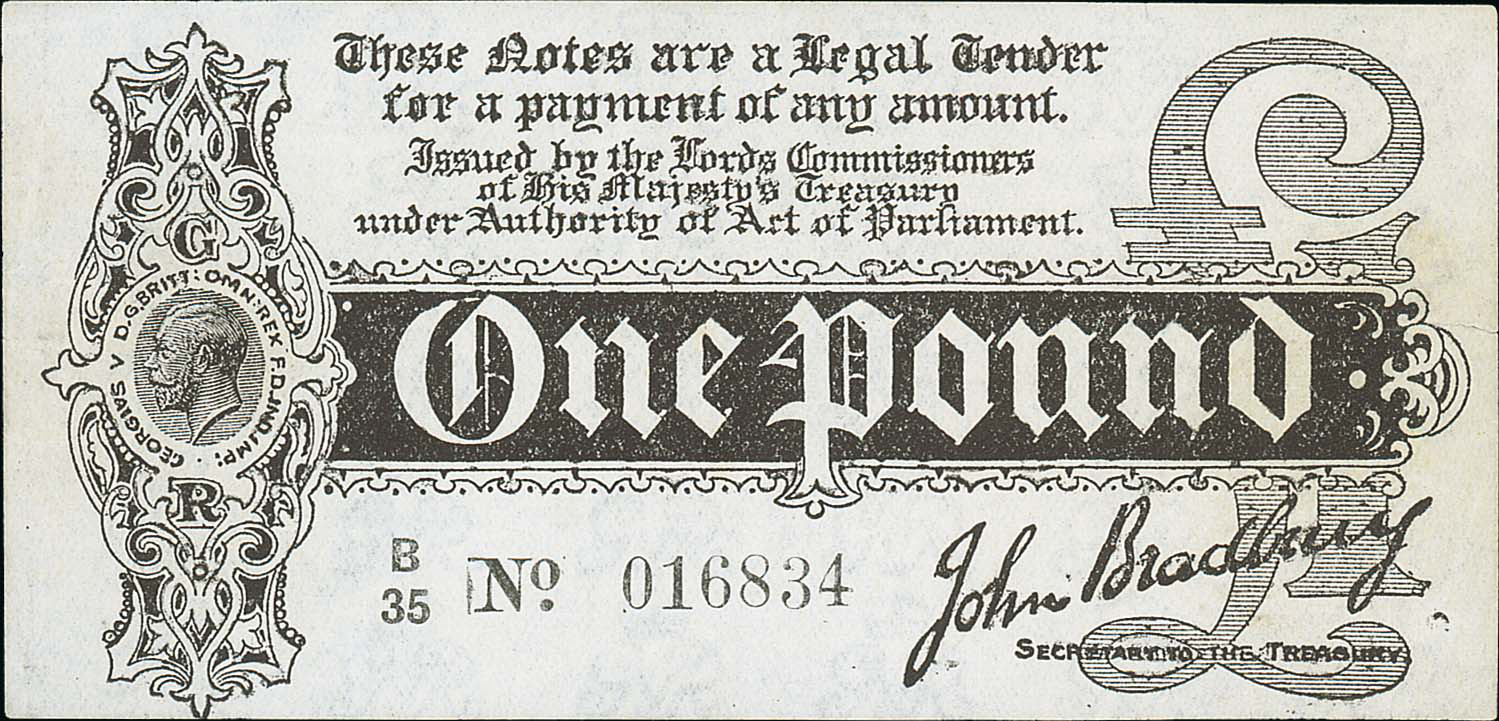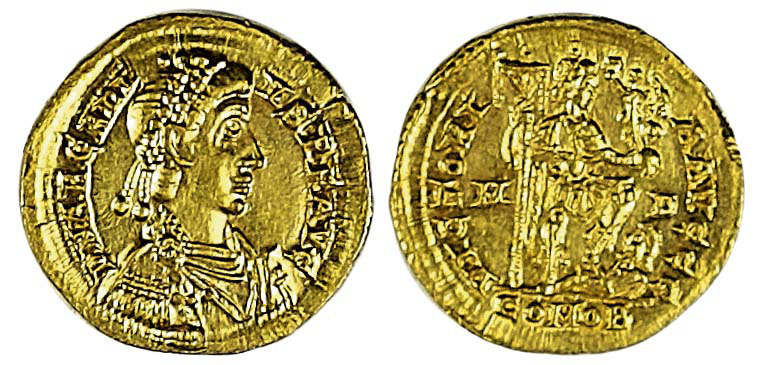Stamp collecting is a rewarding hobby for all ages. However, it can be quite challenging if you don’t know the meaning of the stamp terminology that’s widely used by collectors and dealers.
This guide to stamp collecting abbreviations has been compiled for those who may need a bit more clarity to fully understand the various classifications and philatelic terms.
Adhesive: A stamp that is gummed
Airmail Stamp: Issued to prepay the postage of mail carried by air
Albino: A design impression without any colour
Aniline: A water soluble ink or dye
Approvals: When a collector is offered a wide range of stamps to examine and choose from ahead of a purchase, but it must be bought or returned to the dealer in a specified period of time
AVG - Average (AVG): A stamp is average if the design is cut into by the perforations in any way, if the outside margin shows on the perforation teeth or if heavy cancellation marks are present
Average Mounted Mint (AVMM): As issued by the Post Office, with good gum and fully complete perforations, with hinge marks on the rear and other visible faults
Average Unmounted Mint (AVUM): A stamp which is in the state it was issued by the Post Office, bearing good gum and full complete perforations, but with visible faults
Average Used (AU): A stamp in a good used condition with cancellation marks, small defects or heavier postmarks
Bisect: Describes part of a stamp cut in two for separate use; usually during an era of stamp shortages
Blind perforation (Blind perf): A perforation which has not been fully punched out and has left some paper where the perforation holes should be.
Block: A group of four or more unseparated stamps, which form a square or rectangle
Blunt perforation (Blunt perf): A stamp with a perforation which is shorter than would usually be expected
Booklet: A small book which contains stamps in 'panes'
Booklet Panes: A small leaf or page of stamps which is sold in a booklet format
Cachet: A commemorative marking, illustration or description on an envelope which explains the commemorative purpose when it was mailed and is usually applied by a rubber stamp
Cancellation: An authorised mark applied to a stamp to prevent its reuse by defacing it surface
Centring: The position of the design on a stamp within its perforations. For example: On a perfectly centred stamp, the design ‘well-centred’ when exactly in the middle
Chalky paper: Stamp paper is coated with a chalky solution for security purposes to prevent the attempted removal of the postmark, which would damage the stamp's surface
Charity stamp: A stamp which was issued with a premium or surcharge for charitable purposes
Circular date stamp (CDS): A circular cancellation mark which often has the date and place name or location within it
Classic: One of the earliest stamp issues from a country, usually up to about 1900
Coil join: A tab which unites two sections from a roll of stamps
Coil Stamps: Stamps which were produced in rolls for use in vending machines and can often be identified by a pair of straight edges on opposite sides
Comb perforation: When the perforation pins have been arranged in a comb pattern to perforate three sides of a stamp in one stroke
Commemorative stamp: A stamp issued to mark a person, special event or anniversary - which is usually only on sale for a limited period of time
Commemorative Sheet: A sheet of stamps with a commemorative inscription to mark an event or anniversary
Cover: An envelope, postcard, letter-sheet or any other wrapper which has been used to send correspondence by mail
Cut Square: The cut corner of an envelope or postcard bearing the imprinted stamp with ample margins
Cylinder number: Letters and numerals displayed in sheet margins which can identify printing cylinders. They are normally collected in a ‘cylinder block’ of six stamps
Defective Mint (DEFM): A stamp which has heavy creasing, thins or missing perforations, but would otherwise be classed as in a 'mint' state
Defective Used (DU): When a stamp is in 'used' condition but it also has noticeable defects, such as small tears, creases, clipped perforations or thins
Definitive: A stamp issued for ordinary postal use which remains on sale for an extended period
Denomination: The monetary value printed on a stamp
Die: A small, flat piece of soft steel which is used to print stamps by using an engraving plate to impress the design onto the paper
Disturbed gum (DG): When the gum of a stamp has been damaged in some way
Doctor blade: A steel blade used to remove surplus ink from a printing cylinder in the press
Duck Stamp: Issued annually since 1934, these US duck hunting permits help to finance the federal waterfowl program
Embossed Envelope: An envelope which bears a postage stamp with a raised surface design printed on the actual envelope
Embossing: A form of printing in relief
Error: Highly-collectible stamps because a mistake in stamp design, printing or production has occured during their design or manufacture
Essay: A trial stamp design which sometimes differed from the actual issued stamps
Extremely Fine (XF): A stamp where the design is well centred with the margins on all sides almost perfect, wider than usual and clear from any perforations. For used stamps, the cancellations are light and tidy. For unused or mint stamps, the original gum is present
Face Scrape: Where part of the stamp's front side has been scraped away to leave a spot in the overall stamp design
Face value: The denomination or value of a stamp, which is expressed on its face
Fine (F): A stamp design with unbalanced margins (top or bottom), but is not cut in any way by the perforations
Fine to very fine (F-VF): The stamp design is slightly off-centred (horizontally or vertically) but is clear from perforations - making it attractive, but widely collected because it does not come with an unaffordable price
Fine Used (FU): Stamps which are lightly cancelled and have a circular date stamp
First Day Cover (FDC): An envelope or card which has been postmarked and used on the first day of issue.
First Flight Cover: An envelope or postcard which was carried on the inaugural mail flight between two destinations
Flaw: When a printing fault causes a fortuitous blemish on a stamp
Forgery: A fraudulent copy of a genuine stamp, overprint or postmark - usually done to deceive collectors
Frama stamps: Also known as Machine Labels, these stamps are produced by a micro-processor machine after coins of the required value have been entered
Gem: A term which can be used by anyone because it has no definite meaning - although it is mostly used to describe an extra high-quality stamp with fine centring, boardwalk margins and no faults or other special features.
Graphite lines: GB definitives, from 1957 to 1959, had black vertical lines printed on the back of them so they could be used by automatic letter-sorting equipment.
Greetings stamp: A stamp intended for use on a birthday card or other mail specifically for a special greeting
Grill: This series of small dots is embossed on a stamp to allow ink from the postmark to sink in and prevent the stamp being cleaned and reused
Gum: The coating of adhesive glue on the back of an unused stamp.
Gum bend, Gum crease or Gum wrinkle: A natural occurrence in flat-plate printed stamps where the paper has shrunk and the gum did not shrink at the same rate, causing the stamp to wrinkle. This will not lower a stamp's value unless it is severe.
Gum skip: A portion of the stamp has been left without gum because it was not spread completely over the stamp during its manufacture.
Gutter: The blank margins of narrow space dividing a sheet of stamps into panes and permitting perforation
Handstamp: A postmark or overprint which has been applied by hand
Heavily hinged (HH): When the gum has been hinged and the mark which has been left is very large or prominent
Hinge Remnant (HR): The gum has had a hinge applied to it and a portion of it was so difficult to remove that it was left attached to the stamp
Hinged (H): The gum surface has had a hinge applied to it
Hinges: A small gummed strip which is used to fix stamps to the pages of an album
Imperforate (Imperf): Stamps which have been deliberately printed and issued without perforations, so that they bear straight edges on all four sides
Imprint: When the name of the printer or issuing authority is inscribed on the stamps or in the sheet margins
Imprinted stamps: Stamps which have been printed directly on to postal items such as postcards or envelopes
Inclusion: When a foreign piece of material has been pressed into the paper during manufacturing to create a spot that can be seen on the front, back or in the middle of a stamp
Invert: A stamp with one part of its design printed upside down in relation to the rest of the stamp.
Jubilee Line: The coloured line found in the sheet margin of certain Q.V. and K.E.VII British stamps
Jumbo or Boardwalk Margins: A stamp where the border between the edge of the design and its perforations is larger or smaller than that of other stamps in the same sheet. If this space is large, the stamp is usually referred to as a 'jumbo' and is more attractive and desirable.
Key type (U): A uniform design used by many colonial countries, where a standard key, head or plate was used with different duty plates to bear the country's name and the stamp's value
Lightly hinged (LH): The gum has had a hinge applied but the mark which has been left is very small or light
Line perforation (P): When a sheet of stamps is seperated by a single line or row of holes
Local: A stamp with geographical limits of where it can be used to post items
Machin: A common name given to GB definitives, first issued in 1967, which had the Queen’s head designed by Arnold Machin
Machine label: More popularly known as Frama stamps, these are stamps produced by a micro-processor machine after coins of the required value have been entered
Maltese Cross: The cross-shaped cancellation which was used on the first British stamps
Margin: The unprinted edging which surrounds or divides a sheet of stamps.
Maximum card: A picture postcard often with a stamp and cancellation which is relevant to the actual picture on the card
Miniature sheet: A small sheet of one or several stamps which are usually decorative
Mint: A stamp in its original and unused pristine condition which was never cancelled and bears its full or original gum
Mint Never Hinged (MNH): A stamp, as issued by the Post Office, with full original gum and which has not been previously hinged
Mint Sheet: An entire sheet of stamps in their original unused condition as issued by the Post Office
Mounted Mint (MM): In the state as it was issued by the Post Office, including good gum and fully complete perforations, but with hinge marks on the back
Mulready: Envelopes and letter sheets issued by Great Britain during 1840 which had a pictorial motif designed by William Mulready
Never hinged (NH): A stamp that has never had a hinge applied to it with full original gum and no marks of any kind - sometimes known as an unhinged
New Printings: When additional supplies of current stamps are reprinted
No gum (NG): An unused stamp without gum
Non Value Indicator (NVI): A stamp with no monetary value on it, but with its postage class (1st, 2nd) shown instead
Obsolete: A stamp which is no longer sold by the Post Office even though it may still be valid for use on post
Official Stamp: A stamp which was valid only for use by a government agency
Overprint: Printing added to a stamp after production to indicate a change in value or function, or to commemorate an event.
Pair: Two unseparated stamps which are joined either vertically or horizontally as originally issued
Pane: A formation or group of stamps within a sheet
Perforation Gauge: A device which is used to gauge the number of perforations on a stamp in two centimetres
Perforations: The holes which are punched between stamps on a sheet to make them easy to separate
Personalised stamp: A stamp bearing an image taken from a personal photograph, but with an attached non-postal label
Philately: The technical name for stamp collecting
Phosphor stamps: Stamps which have been overprinted or coated with phosphorescent materials so they can be recognised by automatic letter sorting machinery
Pictorial: Any stamp which features a decorative image, rather than the usual symbolic designs such as a portrait or coat of arms
Plate Block: When four or more attached stamps are still fastened to the margin which has the number of the printing plate clearly inscribed
Plate number: This is when the letters and numerals in a sheet margin identify the printing plate
Postal Stationery: Postcards, envelopes, cards or any other covers which bear imprinted or impressed stamps on them
Postmark: Any markings on a postal item, such as a cancellation, which records the date and/or origin of its connection with the postal service and its transit through the mail system
Precancel: A stamp which was intended for use by a bulk poster and supplied with a pre-printed cancellation by the post office
Presentation pack: A stamp collecting souvenir which contains a set of stamps and some descriptive text about the issue
Prestige booklet: A booklet of stamps devoted to one subject or event which contains special panes of stamps accompanied by descriptive text alongside them
Proof: A trial impression stamp which has been taken from an original die or printing plate
Provisional: A stamp issued for temporary use often overprinted or surcharged
Pulled perf - Pulled perforation (PP): A stamp where the perforation tip is missing completely
Regional: A collectors' term for issues by Royal Mail for use in Scotland, Wales or Northern Ireland. Seperate issues were also made for Guernsey and Jersey to 1969 and until 1973 for the Isle of Man.
Re-gummed (RG): A stamp which has had new gum applied in place of the original.
Remainders: Stamps which remain in official stocks even after becoming obsolete
Re-perforated (RP or Reperf): When alterations have been made to a stamp to add perforations to one or more edges. This is often done for dishonest reasons, such as to improve the worth of a lower-value stamp
Reprints: Stamps which are printed from original plates after being withdrawn
Revenue Stamp: Any stamp which indicates the payment of a fee or tax
Roulette: When slits or cuts have been used between stamps to seperate them instead of perforations
Seahorse: The high value definitive stamps associated with King George V
Self-Adhesive: A gummed stamp with a pressure-sensitive adhesive that does not need moistening to fix it to the postal item
Selvege: More often known as the margin, this is the unprinted paper around a pane of stamps
Semi-Postal: A stamp where all or part of the money generated by its sale is donated to charity
Se-Tenant: When adjoining stamps differ from each other in some aspect, such as their design or denomination
Short Perforation (SP or Short Perf): When a portion of the perforation tip is still present, but is not as long as it should be
Socked on the Nose (SON): This means that the stamp has a CDS and it is applied very close to dead centre on the stamp.
Spacefiller: A heavily defective stamp with considerable faults which sells for a greatly reduced price
Specimen: A sample stamp which has the words ‘specimen’ perforated or overprinted on it
Straight edge (SE): A philatelic term for when one or more edges of a stamp do not have perforations. Not to be confused with a coil stamp (always has two edges without perforations), a booklet stamp (can have one, two or three edges without perforations) or an imperforate stamp (which has no perforations).
Strip: Three or more stamps which are joined together in a row
Superb (S): A nearly perfectly-centred stamp with a design that is perfect in all aspects. These are usually scarce and worth more in value
Surcharge: When an overprint has been used to alter or change a stamp's established face value
Tab: The illustrated or descriptive label which is attached to a stamp
Tête-bêche: A stamp which is inverted in relation to the adjoining stamp in a pair
Thin: A 'thin' stamp gets its name from having an area where some of the paper is thinner than the remainder of the stamp.
Tongs: The American philatelic term for metal tweezers which are used to handle stamps safely and easily
Topicals: A group of stamps which are all of the same theme, such as trains
Traffic lights: The term used by collectors for the coloured check dots found in sheet margins
Unmounted Mint (UM): A stamp in its original unused condition, as issued by the Post Office, with good gum that has never been hinged and complete perforations. Also known as unused never hinged
Unused (*): A stamp with no cancellation or any other sign of use, usually without gum
Unused never hinged (**): Also known as an 'Unmounted Mint', this is a stamp in its original unused condition that has not been hinged
Used (O): A stamp that has been used postally and appropriately postmarked
Used abroad: Stamps from one country which has been used and postmarked in another country
Used on piece: A stamp which has been kept on part of the original cover to completely preserve its postmark
Variety: When a stamp differs in some detail from its 'normal' issue
Very fine (VF): Well centred with full perforations and light cancellation if used
Very Fine Used (VFU): A very fine stamp which is undamaged, almost perfectly centred and bears a light postmark
Vignette: The central portion of a stamp's design which has been printed separately within the frame
Watermark: The distinctive design or pattern formed in paper by 'thinning' it during the manufacturing process to protect against forgery and act as a valuable security precaution.
Watermark Detection: A method where collectors place a stamp in a tray filled with special fluid to safely determine the existence of a watermark
Wilding: The popular name issued to British definitive stamps, which were first issued in 1952, featuring the Queen’s head and taken from a photographic portrait by Dorothy Wilding
Wing margin: When a wide margin occurs on one side of a stamp because of the central perforation of the sheet gutter margin




